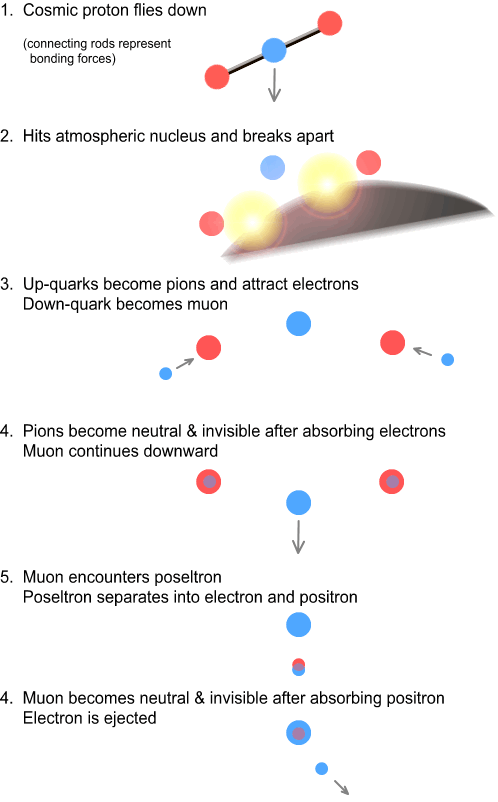In the grand tapestry of the universe, particles emerge as the fundamental threads that weave the intricate fabric of reality. These minuscule entities, each embodying unique characteristics and behaviors, operate under a set of immutable laws that govern their interactions and dynamics. To comprehend what induces these particles to adhere to the established laws of physics, one must delve into the realms of quantum mechanics, relativity, and the fundamental forces of nature. In doing so, we illuminate the profound interplay between particles and the laws that characterize their existence.
The universe can be likened to a grand symphony, where each particle performs its own distinct melody, yet together they create an awe-inspiring orchestration. The laws of physics serve as the score—a set of guidelines that dictate how each musician (particle) contributes to the overall harmony. From the smallest quarks to the formidable galaxies, each particle follows the score with remarkable precision, adhering to rules that have withstood the scrutiny of epochs.
At the microcosmic level, particles such as electrons, protons, and neutrons operate in a probabilistic realm governed by quantum mechanics. This branch of physics introduces a captivating metaphor: particles are akin to actors on a stage, uncertain of their next line until the moment comes to deliver it. The famous Heisenberg Uncertainty Principle encapsulates this notion, suggesting that the more precisely we ascertain a particle’s position, the less accurately we can determine its momentum, and vice versa. This intrinsic uncertainty does not manifest as chaos; rather, it forms a structured unpredictability, allowing particles to follow statistical distributions and exhibit behaviors that culminate in the laws of thermodynamics and statistical mechanics.
Transitioning from the quantum domain to a broader vista, we encounter the four fundamental forces of nature: gravitational, electromagnetic, strong nuclear, and weak nuclear forces. These forces are the unseen architects of the universe, dictating how particles interact with one another. The gravitational force, for instance, governs the intricate dance of celestial bodies, compelling them to adhere to elliptical orbits, meticulously outlined by Kepler’s laws. Here, particles do not merely float aimlessly but are anchored by a gravitational ballet that resonates through the vast expanses of space.
The electromagnetic force, another foundational pillar, is responsible for the cohesive interaction between charged particles. It is this force that accounts for the formidable repulsion and attraction between particles that constitute atoms, dictating the structure of matter. Visualize this force as an invisible thread, binding electrons to their atomic nuclei, ensuring stability across a myriad of elemental configurations. Without this binding influence, the very essence of matter would dissolve into a chaotic state, bereft of the structure that enables the existence of solid, liquid, and gaseous states.
The strong nuclear force, known for its incredible potency, binds protons and neutrons within the atomic nucleus, counteracting the electromagnetic repulsion that would otherwise force positively charged protons apart. This force, while profoundly short-ranged, acts as a glue that provides the very stability necessary for the existence of atomic structures. In contrast, the weak nuclear force governs the processes of radioactive decay and nuclear fusion, illuminating the transformative possibilities within the core of stars—entities that give rise to the very elements that constitute our universe.
It is essential to acknowledge that while particles function in accordance with these fundamental forces, their behavior is also influenced by symmetries and conservation laws. Symmetry, a cornerstone concept in modern physics, suggests that certain properties remain invariant under specific transformations. For instance, the conservation of energy states that energy cannot be created or destroyed; it can only change forms. This principle shapes the trajectories and interactions of particles, establishing a framework within which they must operate.
Entropy, or the measure of disorder within a system, introduces another layer of complexity to particle behavior. In a closed system, the tendency towards increased entropy determines the directionality of physical processes. This law, known as the Second Law of Thermodynamics, informs and constrains the interactions among particles, compelling them towards configurations that culminate in equilibrium states. The path from order to disorder is not merely a tangible consequence; it is a fundamental principle that particles obey as they navigate their existence.
In an intriguing twist, the laws of physics not only govern particles but also inspire philosophical inquiries into the nature of reality itself. The deterministic nature of classical mechanics contrasts sharply with the probabilistic essence of quantum mechanics, leading to profound questions about free will and the trajectory of existence. If particles adhere to predetermined laws and interactions, what implications does this have for the broader spectrum of consciousness and decision-making? This tension between determinism and randomness adds a rich philosophical dimension to our understanding of particle behavior.
In conclusion, the exquisite choreography of particles within the tapestry of the universe is a symphony of laws, forces, and principles that direct their behavior. From the probabilistic dance at the quantum scale to the majestic gravitational ballet of cosmic bodies, it is the intricate interplay of these aspects that compels particles to follow the laws of physics. Each law serves not only as a guiding star but also as a declaration of the structured beauty inherent in the universe. As we continue to unravel the enigmas of particle behavior, we delve deeper into a reality that is as enigmatic as it is orderly, revealing the profound allure of the laws that govern our existence.












